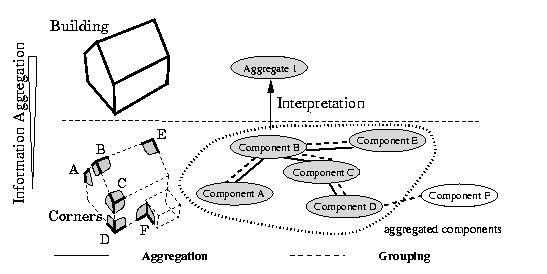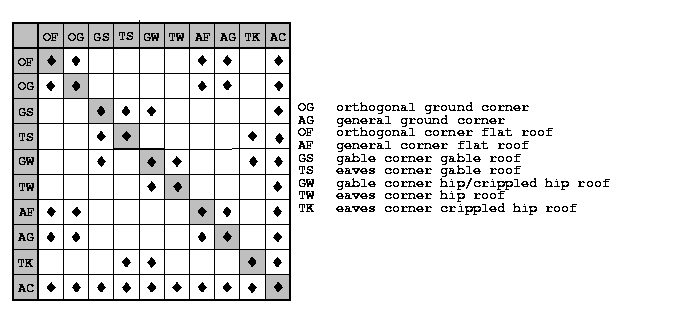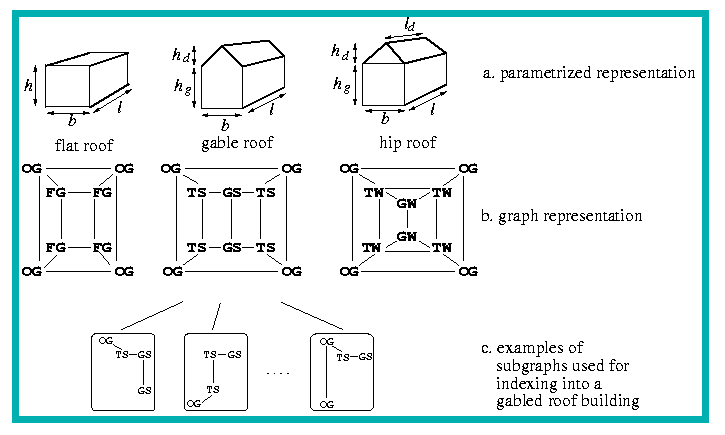Automatic Geometric and Semantic
Reconstruction of Buildings from Images
by Extraction of 3D-Corners and their 3D-Aggregation
3D-Corner AGgregation (CoAG)
Overview
The reconstructed corners form the basis for the reconstruction of buildings by 3d aggregation of the object-parts to aggregates of a higher level of the building hierarchy. The local corner components, especially their geometry and their interpretation class define domains specific constraints for the connection of the corners.
The aggregation process is devided in two steps, namely
the
-
grouping of corners which is given by the connections of corners within the level features of the hierarcy
and the
- aggregation of corners to building which is done by connectiong the corner components to object of a higher level of the aggregation hierarchy:

Fig 1: shows different corner subclasses, that are sufficient for describing the building types flat roof, prismatic roof, gable roof, hip roof and crippled hip roof.
Grouping of Corners:
The grouping is performed by deriving a corner adjacency graph. Therefore the compatibility of corners is investigated in two steps:
- testing the compatibility of the corner classes: The compatibility of corner classes qualitatively expresses the geometric compatibility. It is the prerequisite for the geometric compatibility. It is represented in a connectivity matrix of the corner classes (cf. fig. 2). The matrix ensures the compatibility of the unary and binary constraints of the corresponding corner pairs.

Fig 2: shows the corner adjacency matrix whichg represents possible corner connections which fulfill the compatibility of the corner classes.
- testing the compatibility of the corner geometry: The compatibility of the corner geometry quantitatively investigates the form instances of the objects resp. their components. We check 3d the following geometric constraints :
- 3d collinearity of lines
- coplanarity of faces
- 3d distance of corners points

Fig 3: shows different corners which do not fulfill the geometric compatibility of the corner instances and thus can not be grouped.
Aggregation of Corners:
The aggregation of corners is performed in object space. It uses the structural decomposition of buildings into corners components. Aggregates are decribed by a parametrized building model as well as by a graph representation with the nodes being corners and the arcs denoting corner connections (cf. fig 3). The instantiation of the parametrized building types is performed by a subgraph isomorphism indexing into a building database. For restricting the search space the node types, that is class labels of the corners are used.

Fig 3: shows parametized building types which are objects on the aggregation level buildings. The second row shows the corresponding graph representation which gives the structural decomposition into corners on the aggregation level of the feature aggregates. The last row shows different subgraphs which are sufficient for deriving all parameters of a gabled roof building. .
Verification of Building Aggregates:
The result of grouping and aggregation provides objects on a higher aggregation level by interpretation of the reconstructed and interpreted corners.
The aggregated objects have to be regarded as hypothese and have to be verified as well as within the corner reconstruction process.
We propose a multi image parameter estimation using the more global building constraints for deriving consistent building instances.
FL - 30.4.99




